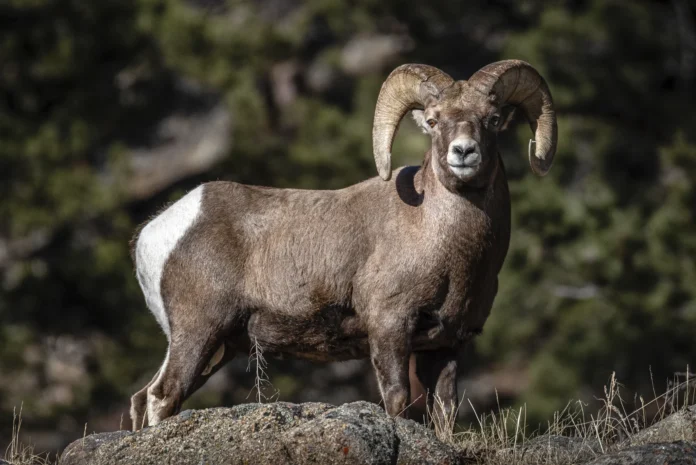Rocky Mountain bighorn sheep (Ovis canadensis canadensis) are the West’s cliff-country specialists: shock-absorbing hooves, binocular-grade eyes, and rib-rattling rams that can turn a granite ledge into a boxing ring. They nearly vanished a century ago under the one-two punch of unregulated hunting and diseases carried by domestic sheep and goats. Across the Rockies and adjoining plains, wildlife agencies and partners have spent decades clawing them back with reintroductions, habitat work, and tight harvest regulation. The progress is real—but fragile. Pneumonia continues to kneecap lamb survival, and climate stress is tightening the vise on already marginal alpine and breaklands habitat.
Where They Stand Today—and How They Got Back
By the early 1900s, many herds were gone or reduced to remnant bands. Modern recovery leaned on trap-and-transplant projects, strict tag limits, and aggressive separation from domestic flocks. Colorado—home to the largest bighorn population—frames it plainly: the species rebounded from near-extinction but remains vulnerable wherever disease pressure or habitat fragmentation persists.
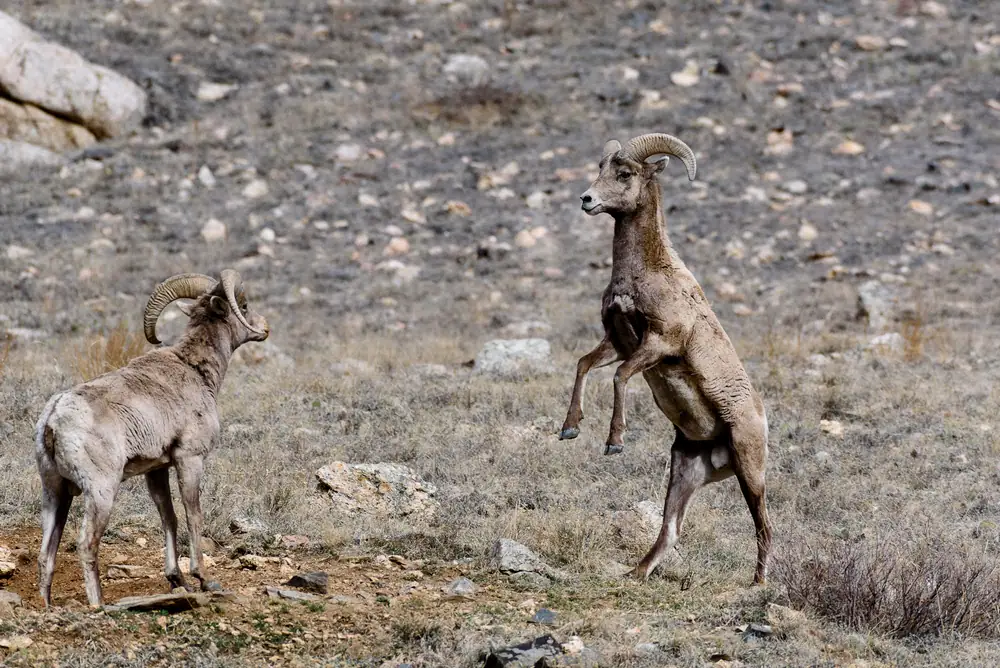
Western Nebraska’s Comeback
Bighorns aren’t just a high-alpine story. Historically, a plains subspecies (Audubon’s bighorn) ranged the Pine Ridge, Wildcat Hills, and river breaks of western Nebraska before disappearing in the early 1900s. In 1981, Nebraska Game & Parks launched reintroductions at Fort Robinson, followed by additional releases that seeded herds in the Wildcat Hills and Pine Ridge. Today, Nebraska manages tiny but visible herds and funds much of the work with a mix of conservation dollars and very limited permits (lottery/auction). In 2025, the agency even piloted a tightly controlled “management hunt” in parts of Scotts Bluff and Banner counties to rebalance ram-ewe ratios—about as conservative a model as it gets.
South Dakota’s experience echoes the region: early translocations to Custer State Park in the 1920s, die-offs, then multiple reintroductions since the 1960s in the Black Hills and Badlands with mixed success, largely due to disease events.

The Non-Negotiable Threat: Pneumonia
If you learn one pathogen, make it Mycoplasma ovipneumoniae (M.ovi). It’s the key spark that ignites recurrent, polymicrobial pneumonia in bighorns. Adult carriers can look fine yet shed bacteria, seeding fatal outbreaks in lambs and depressing recruitment for years. Managers have few silver bullets. There’s no effective vaccine in the toolbox. The most promising tactic is “Test and Remove”: capture ewes, identify chronic carriers, and remove them to break the transmission chain. It’s slow, controversial, and labor-intensive—but in select herds it’s boosted lamb survival and overall herd health.
Nebraska’s monitoring shows how stubborn this problem is. For example, the Barrel Butte herd in the Pine Ridge suffered little to no lamb recruitment for multiple years despite translocations and intensive monitoring—classic signatures of persistent disease pressure.
Bottom line: keep wild bighorns and domestic sheep/goats apart, or be ready for wrecks. Colorado even authorizes special “management licenses” to remove individual wild sheep or goats when necessary to prevent contact with domestic stock. It’s hard policy for a hard problem.
Climate Change: Turning the Screws
Bighorns don’t read IPCC reports, but their habitat is already feeling the heat. High-elevation and breaklands systems are warming and drying. Earlier springs, longer fire seasons, and snowpack volatility reshuffle plant phenology and water availability. For sheep, that can mean poorer forage timing, longer distances to water, and greater overlap with people and domestic animals—all of which indirectly elevate disease risk. Agencies and researchers flag bighorns as climate-sensitive, with recommended adaptations ranging from securing reliable water to managing recreation timing and, crucially, minimizing contact with domestics as ranges shift.
Add competition: expanding mountain goat populations (native in some ranges, introduced in others) can displace bighorns at mineral licks and key foraging spots, and climate-driven crowding makes those confrontations more frequent. Field studies in Colorado’s high country documented goats dominating nearly all interspecific encounters—bad news when resources tighten.
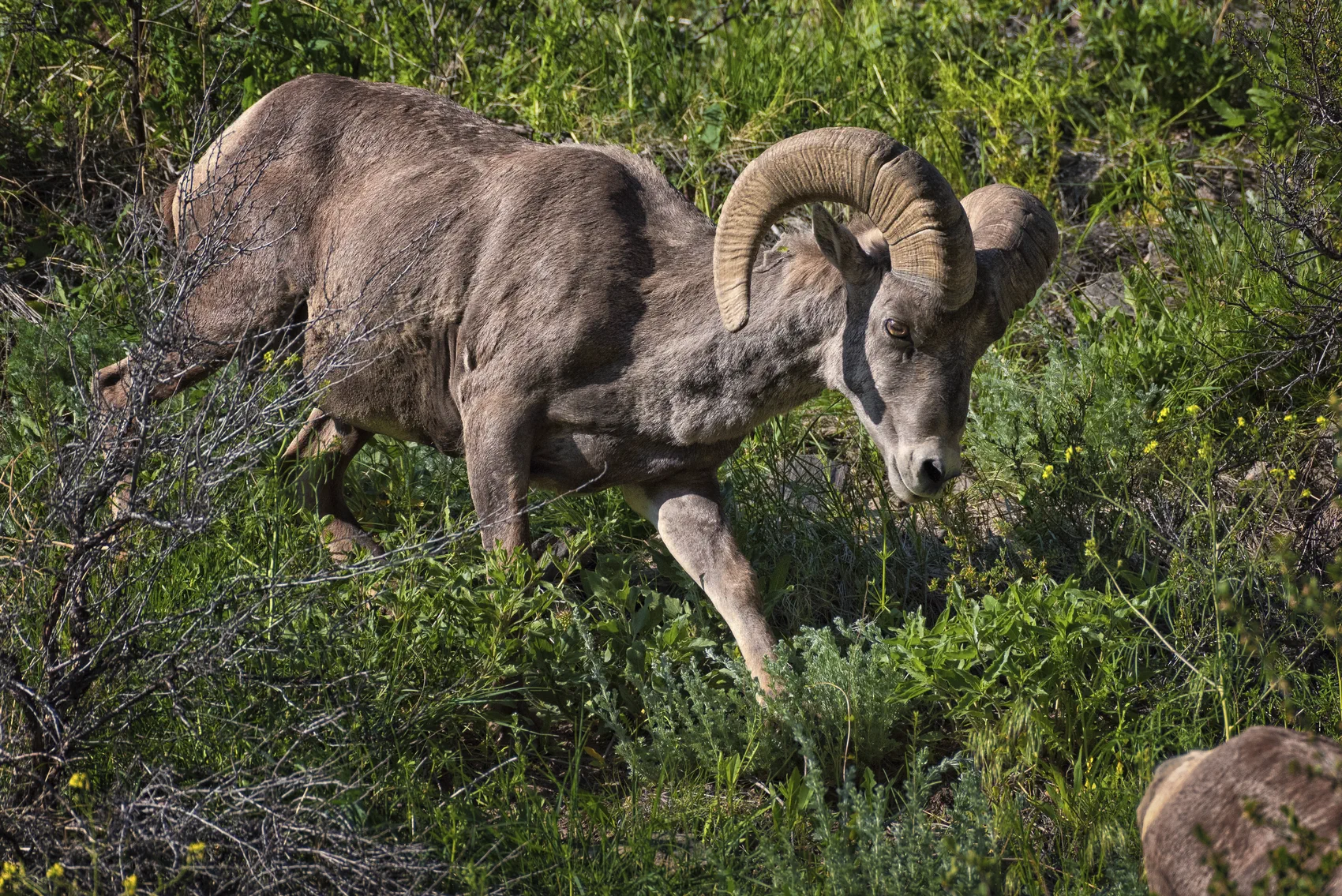
Predators: Important—but Usually Not the Driver
Predation is part of the ecology. Lions take adults. Coyotes, bobcats, and golden eagles can nab lambs. In most stable systems with decent forage and low disease, herds absorb that mortality. Where disease has already gutted lamb recruitment, though, routine predation can tip a marginal herd into decline. Managers typically address predators only when data show they’re depressing an otherwise recoverable herd; otherwise, the bigger levers remain disease management, habitat, and herd structure.
How Agencies Regulate Populations
Ultra-limited hunting
Harvest is conservative everywhere bighorns occur. Tags are few, often once-in-a-lifetime, frequently allocated by lottery or auction to fund conservation. Nebraska’s program typically offers one auction and one lottery permit per year; locations flex based on which herds can sustain a legal ram without harming growth. Colorado uses preference/weighted draw structures with very small quotas and adjusts units based on disease events and survey data. The common thread: hunting is a population-regulation and funding tool, not a growth limiter.
Disease separation
The most impactful “regulation” isn’t a tag—it’s a fence line and a management map. States use grazing-allotment planning, targeted removals, and special management licenses to keep wild sheep from mixing with domestic sheep/goats. That separation work saves more lambs than any season tweak ever will.
Intensive monitoring
Annual aerial/classification flights, radio-collars, lamb:ewe ratios, and necropsies inform whether a herd is growing, flat, or sliding. Nebraska’s technical recommendations summarize collaring, lamb captures, and multi-year recruitment data used to decide where to invest—and where to hold the line.
Targeted translocations
When it’s safe (low disease risk), small numbers of disease-free animals seed vacant habitat or shore up weak herds. Nebraska’s recent Wildcat Hills project—capture, test, collar, release—was designed exactly for that, with outside funding support.
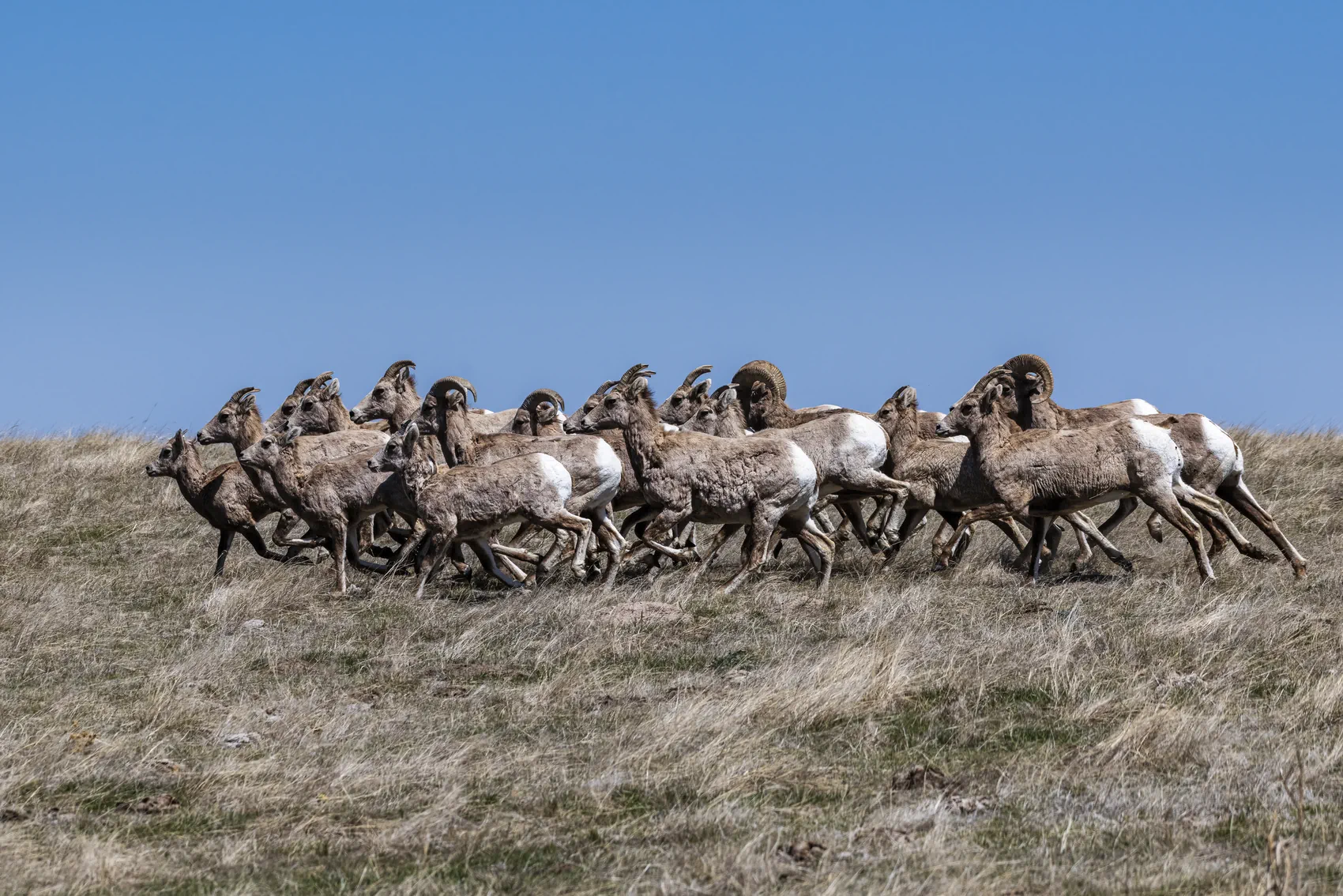
Population Stability: What “Healthy” Really Means
Managers don’t chase big headcounts; they chase stable, self-replacing herds with consistent lamb recruitment. A common yardstick is lambs per 100 ewes after the summer/fall window. In pneumonia-hit systems, that ratio craters, and herds age out—lots of old rams, too few replacements. That’s why you see tiny tag quotas even when you spot multiple rams on a skyline; the herd’s replacement rate, not the photo-op, sets the quota.
Reality check from Colorado: on paper, total numbers may look “stable,” but recurring disease events and poor recruitment in select herds mean the broader restoration isn’t “done.” That sober framing is slowly becoming the regional norm.
What This Means on the Ground (and in Western Nebraska)
- Expect localized wins and losses. A herd can boom in one canyon and bust in the next, depending on whether M.ovi found a foothold. Nebraska’s Pine Ridge example is instructive—years of low lamb recruitment despite effort tell you how sticky these bugs are.
- Harvest will stay tight. Don’t expect more tags unless lamb ratios rise for multiple seasons. Nebraska’s lottery/auction structure and Colorado’s micro-quotas aren’t stinginess; they’re survival strategy.
- Climate will amplify weak points. Less predictable water and forage timing means more energy stress and more risky overlap with people and stock. Keeping domestic sheep/goats out of bighorn country only matters more from here.
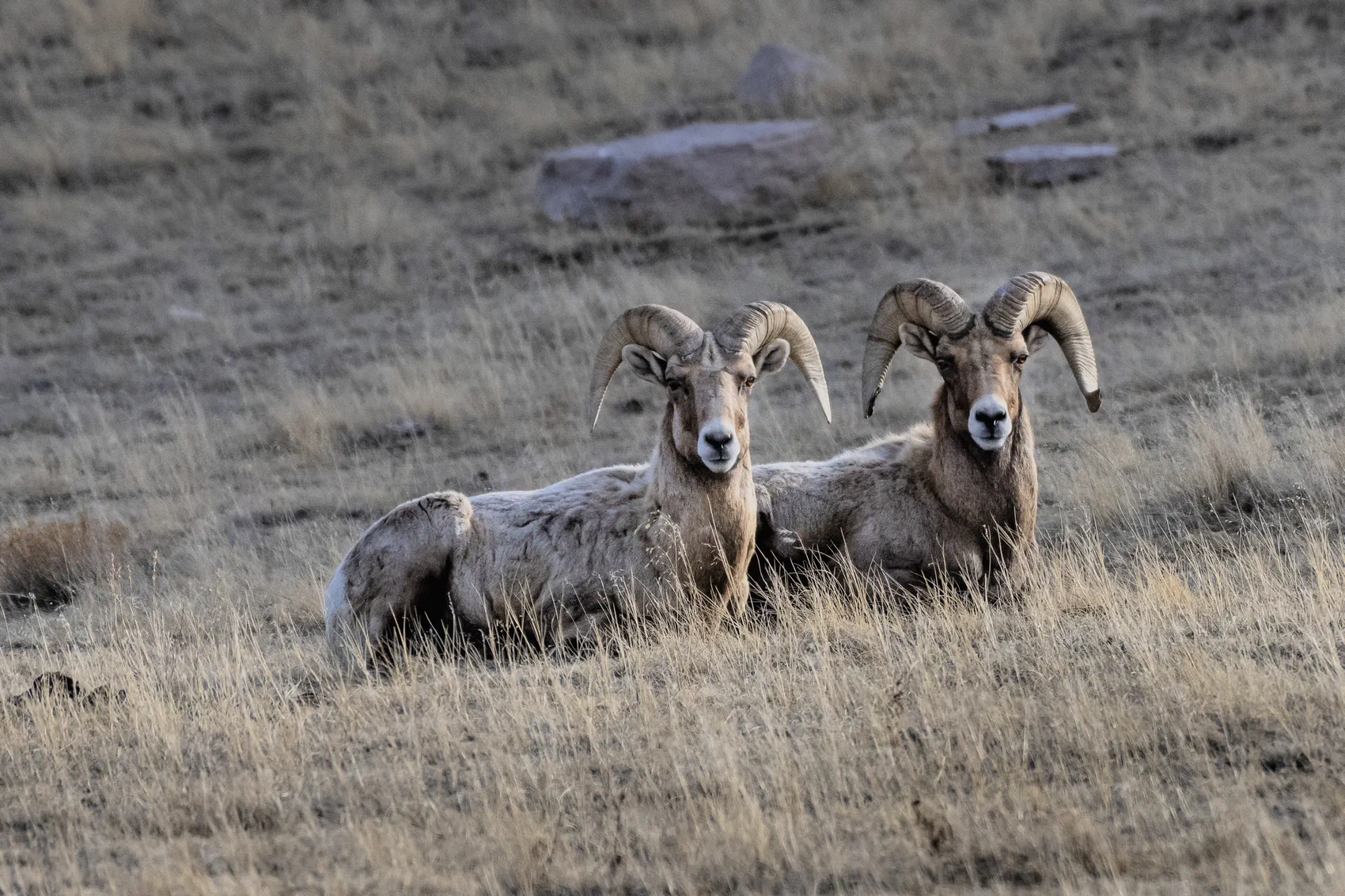
The Playbook That Works
Hunt like a scalpel, not a hammer – Use tags to trim surplus rams and fund the program, not to “manage down” a problem the rifle can’t fix.
Keep them clean – Prioritize absolute separation from domestic caprids; use Test-and-Remove where a few carrier ewes are holding a herd hostage.
Keep them fed and watered – Protect and restore native shrub-steppe and alpine forage, secure reliable water sources, and manage recreation pressure during lambing to keep stress down.
Move only when safe – Translocate from disease-free sources; test before you ship; collar and verify recruitment afterward.
References and research
- Nebraska Game & Parks Commission: Bighorn Sheep Management Plan (Aug 2019)
- “A review of population and landscape level dynamics of bighorn sheep” (Paolini et al. 2023)
- USFS / RMRS – Review: bighorn sheep ecology, disease & landscape structure
- “The Effects of Human Activity on Reintroduced Bighorn Sheep” (Cherovsky, 2022)
- “Evaluation of an Augmentation of Rocky Mountain Bighorn” (Zimmerman, SD State University)
- “Restoration of bighorn sheep: History, successes, and obstacles” (Whiting et al. 2023)
- “Factors Influencing Mortality of Bighorn Sheep” (Moberg, 2023)
- “A Review of Hypothesized Determinants Associated with Bighorn Sheep Population Declines” (Miller et al. 2012)
- “Demographic uncertainty and disease risk influence climate vulnerability in bighorn sheep” (Gude et al. 2022)
- Wild Sheep Working Group: “Bighorn Sheep Conservation Challenges” (2014)
- National Park Service: “Bighorn Sheep in Nebraska – Reintroduction & disease overview”
- USFS Technical Conservation Assessment: Rocky Mountain Bighorn Sheep (2007)
- “Disease introduction is associated with a phase transition in population growth” (Manlove et al. 2016)

